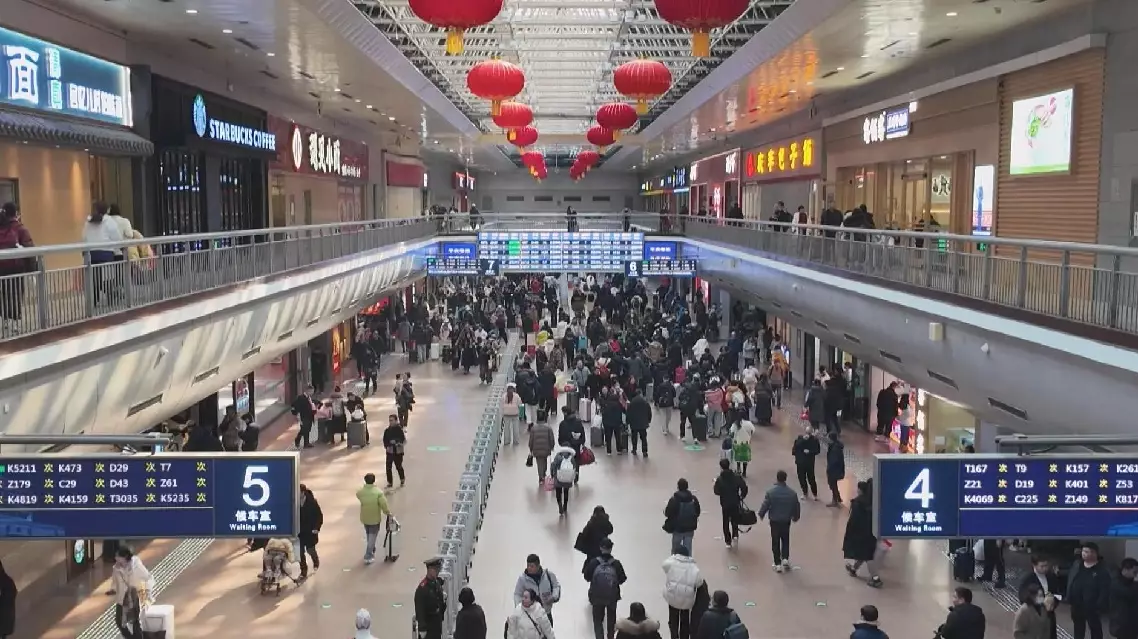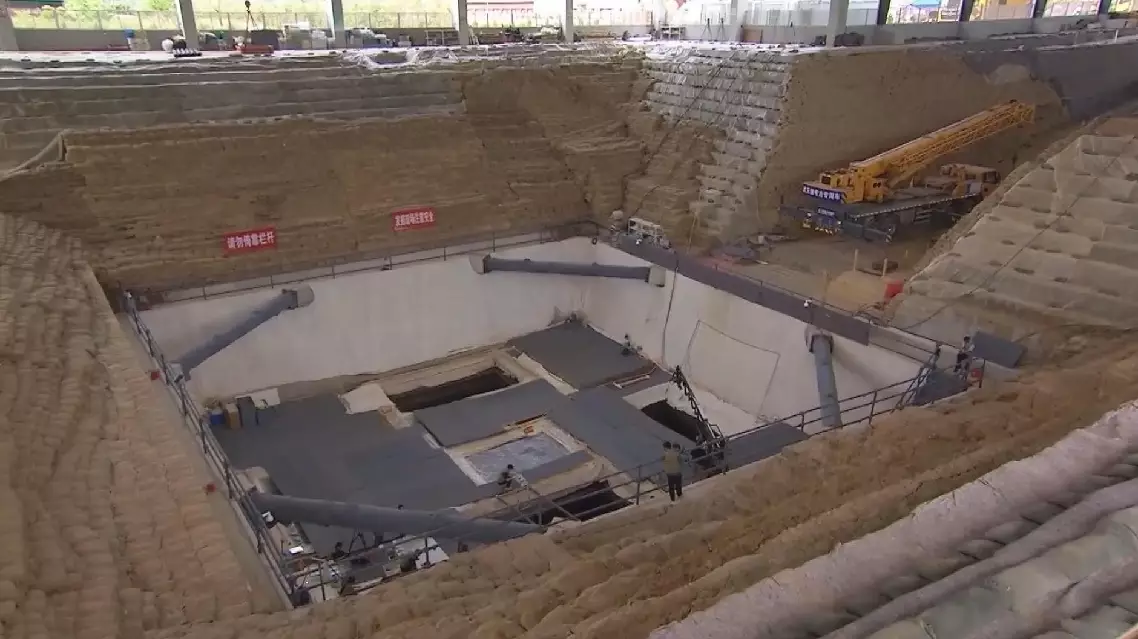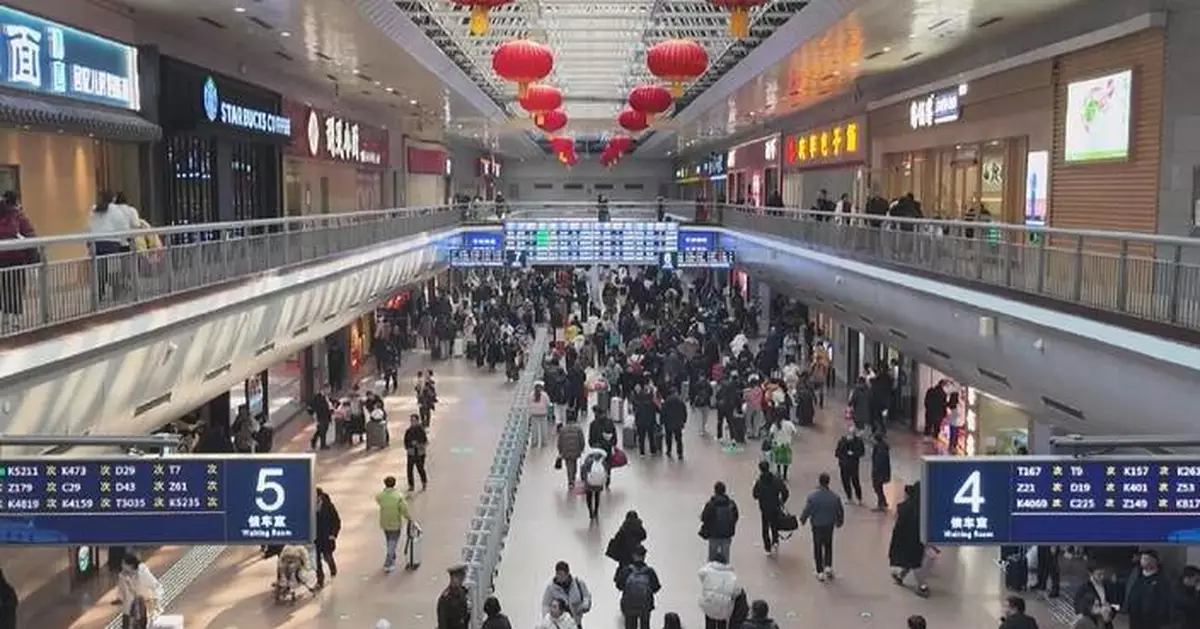China's traffic flow began to increase on Thursday, the 17th day of the Spring Festival travel rush, marked by a rise in the short- and medium-distance travels.
The travel rush during the Spring Festival, known as "chunyun" in Chinese, is China's biggest annual human migration.
The 2025 Spring Festival travel rush will last from Jan 14 to Feb 22, totaling 40 days, with the number of total cross-regional trips expected to reach 9 billion during this period.
China's railway sector is expected to handle approximately 9.5 million passenger trips on Thursday, marking a significant jump from 5.512 million trips the previous day.
A total of 317 trains were added to accommodate this surging demand.
As the ice and snow economy continues to flourish in the country, a new train service was introduced to link east China's Xiamen City and northeast China's Harbin, known as the "Ice City," to cater to the demand during this busy period.
Ulanqab City of north China's Inner Mongolia Autonomous Region, a popular ice and snow tourism destination, established a winter tourism service post in its railway station and launched two bus routes to provide direct access to the ski resorts.
"We offer green channels for entry and exit for passengers carrying their ski gear, along with ski equipment security checks, allowing them to enter and exit quickly and board the train smoothly," said Han Lu, a railway station worker in Ulanqab.
The traffic volume on highways also saw a significant rise on Thursday, particularly in self-driving trips for short-distance travel.
In China's northeastern provinces, however, snowfall and icy conditions on roads had led to a decrease in highway traffic as of 08:00 Thursday.
In the civil aviation sector, 17,989 flights are scheduled for Thursday. During the first 16 days of the travel rush, the average daily passenger volume reached 2.228 million, an increase of 7.49 percent year on year.
The Spring Festival is the biggest annual holiday for the Chinese, when people across the country return to their hometowns for celebrations and family reunion. This year's Spring Festival holiday season lasts from Jan 28 to Feb 4.

Short-distance travel sees uptick on 17th day of holiday travel rush
The top six archaeological findings across China in 2024 were announced at Wednesday's annual archaeology forum hosted by the Chinese Academy of Social Sciences.
The discoveries, covering from the Paleolithic Age to the Yuan (1271-1368), Ming (1368-1644), and Qing Dynasties (1636-1912), shed light on studies on the history and culture of ancient China.
The earliest of the six, the Dadong Site, is located in Jilin Province in northeast China. Discovered in the strata dating from 28,000 to 24,000 years ago, the site involves an artificial stone circle, which should be the remains of a primary shed of ancient humans, implying the archaeological importance of the Changbai Mountain area in the field of evolutionary anthropology studies.
The Xiatang Site in east China's Zhejiang Province, a Neolithic Age settlement site, reveals the structure and layout of the ancient village, providing new evidence for the study of the social structure of early-stage agricultural societies.
At the Siwa Site, another Neolithic Age site in northwest China's Gansu Province, the first prehistory large-scale near square-shaped moat was discovered, which might hint at the origin of the square-walled cities in China.
The Zhouyuan Site in Shaanxi Province of northwest China shows evidence of China's earliest dynasties, providing written materials for studying the history of Western Zhou Dynasty (about 1046 – 771 BC). With over 200 bone and tortoise shell pieces for divination rites being found, phrases totaling over 180 oracle scripts were recognized, covering documentations of astronomy, calendar, history, and geology.
At a Warring States period site in east China's Anhui Province, the Wuwangdun Site, researchers excavated over 10,000 pieces of cultural relics, including multiple Ding sets, or special cauldron sets, the representative ritual vessels that have long been used to represent social class and nobility, and symbols of China's traditional rites and ethnicity.
In east China's Jiangxi Province, the archaeological site of Jingdezhen City, the world-famous town of porcelain with a thousand-year history, welcomed new discoveries. The latest discoveries at the Jingdezhen Site revealed the sources of materials and fuels that supported the large-scale porcelain production, as well as the local traffic net in the Yuan, Ming, and Qing Dynasties, giving people a perception to understand Jingdezhen's development history.
"These discoveries are not only about gathering ancient relics in the fields, but, more importantly, about their value for academic research. Every single result complements our understanding of Chinese history and culture," said Shi Jinsong, the deputy head of the Institute of Archaeology at the Chinese Academy of Social Science.

China unveils top archaeological findings of 2024

China unveils top archaeological findings of 2024






















































